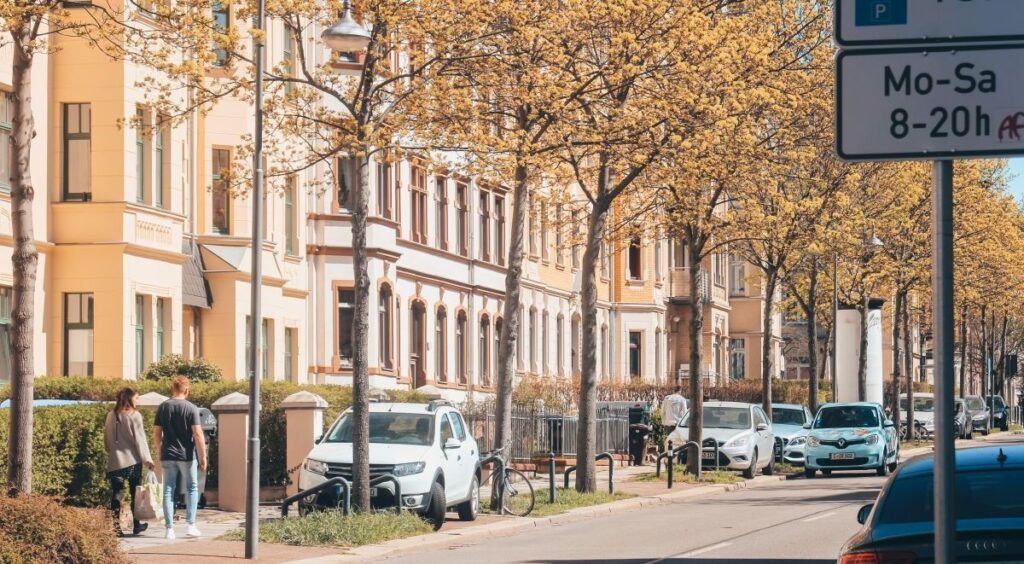The artistic and industrial city of Chemnitz, the former Karl-Marx-Stadt of East Germany, has been named the 2025 Cultural City of Year.
The city of Chemnitz in the state of Saxony has earned its well-deserved place in the cultural annals as the 2025 European Capital of Culture. With the motto “C the unseen,” Chemnitz2025 directs its gaze to the unseen: the unseen of the “quiet center,” the unseen city, the unseen European neighbors, the unseen places and biographies, the unseen talents in each individual. The approach of the “Macher:innen” (Maker) entails micro-project funding, which has already made over 60 creative projects of citizens possible. These projects, and the new ones that will be generated, contribute to making city life a little more colorful, promoting community, dealing with social issues or trying out new formats.
Chemnitz developed strongly when the industrialization started at around 1800. The city quickly became the cradle of German engineering. Until World War II, Chemnitz was the city in Germany with the highest industrial output. The strong economic position overflowed directly into supporting the arts. The mid-19th century saw the start of a flourishing development of cultural achievements. Successful citizens gave commissions to artists, architects and designers, thereby making a lasting investment in the city’s attractiveness.
Traces of Chemnitz’s industrial history can still be found today right across the city: in splendid villas, late-19th-century districts, museums, the opera house, baths, educational institutions, and last but not least, in the numerous factory buildings that have now been converted into cultural institutions, restaurants, lofts and offices. Industrial culture is even celebrated in September every year in Chemnitz. On the Days of Industrial Culture, visitors are invited into companies, which open their doors for the popular “late shift.”
There is also a rich and multi-faceted museum landscape. The Chemnitz Art Collections (Kunstsammlungen Chemnitz) houses over 60,000 exhibits. The museum holds the second-largest collection of the works by Schmidt-Rottluff, co-founder of the expressionist Die Brücke group of artists; and today, he is considered one of the most important representatives of this era.
The Gunzenhauser Museum is one of the most important German art collections and is the unique collection of Munich gallery owner Dr Alfred Gunzenhauser (1926–2015) and consists of more than 2400 works by a total of 270 artists. It includes one of the largest Otto Dix holdings in the world, with 380 works, and Europe’s second-largest Jawlensky collection. Further key exhibits in the museum’s collection are works by Felixmüller, Münter, Modersohn-Becker, Kolle, Kirchner, Beckmann, Schrimpf, Wunderwald, Baumeister and Winter.
In the Schlossberg district, which means “Castle Hill,” a former monastery is the perfect setting for a permanent exhibition of Gothic art from all over Saxony, courtesy of the Dresden State Art Collections. Like the Gunzenhauser Museum, it is also part of the Chemnitz Art Collections.
smac: Chemnitz State Museum of Archaeology is a famous semi-circular department store building in Chemnitz’s Brückenstraße, a work by the important architect Erich Mendelsohn, designed in 1927. The State Museum of Archaeology – smac for short – opened in 2014. The Henry van de Velde Museum in the Villa Esche was designed by Belgian artist Henry van de Velde for the entrepreneur Herbert Eugen Esche and is an architectural monument to modernism and art nouveau.
The TIETZ combines the Chemnitz Museum of Natural History, Chemnitz City Library, Chemnitz Volkshochschule (Adult Education Centre), Chemnitz City Archive and the City’s Cultural Management Office. These institutions together form the Department of Culture of the City of Chemnitz. Its workplace is the former 1912 TIETZ department store that has been transformed into a unique home for art, culture, education and interaction. Welcoming 3000 visitors a day, the TIETZ bridges education, culture and commerce like no other institution in Chemnitz. It shapes the Chemnitz cultural scene and opens horizons with readings, talks, concerts, courses, discussions, exhibitions and events. There are also many other wonderful museums dedicated to a variety of themes also including industrial history.
Chemnitz in addition has a significant performing arts scene, including opera, ballet, a renowned puppet theater, a sophisticated people’s theater and the Robert-Schumann-Philharmonie. The extraordinary, brand-new and diverse productions on show at the SCHLINGEL International Film Festival for children and young audiences have been drawing thousands of young and old filmgoers from Chemnitz and the surrounding area to the CineStar in the Galerie Roter Turm every year since 1996.
Even though we are not able to visit Saxony yet, we can start planning our next trip, and Chemnitz, along with the cultural jewels of Dresden and Leipzig, are true European gems waiting to be discovered. They have extraordinary history and yet these cultural cities do not rest on their laurels, they are actively developing, creating and pushing physical and artistic boundaries of expression, building communities, restoring old places as well as building for the future. They are exciting and inspiring places to visit.
Source: State Tourist Board of Saxony

